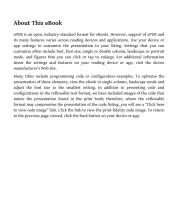BGP - Understanding BGP Session Types and Behaviors
7 important questions on BGP - Understanding BGP Session Types and Behaviors
What are the Administrative Distances for the routes from the two BGP session types?
- An iBGP session route has an AD of 200
- An eBGP session route has an AD of 20
What is important to note about multiple iBGP routers in a single AS?
- There is a Full Mesh Requirement for iBGP within an AS.
- This is because Loop Detection using the AS_Path attribute doesn't work so NLRI's received from an iBGP peer can't be forwarded to another iBGP peer
- iBGP routers might need to set up multi-hop sessions.
In iBGP, why is it more preferable to use Loopback addresses to establish neighbor adjacencies?
- Higher grades + faster learning
- Never study anything twice
- 100% sure, 100% understanding
What are the 3 rules of Route Reflectors?
- If a Route Reflector (RR) receives an NLRI from a non-RR client, the RR advertises the NLRI only to an RR-Client.
- If a RR receives an NLRI from an RR client it advertises the NLRI to RR-clients and non-RR-clients.
- If a RR receives an NLRI from an eBGP peer, it advertises the route to RR-clients and non-RR-clients.
How is a Route Reflector configured?
On the Route Reflector the following command is used:
Neighbor ip-address Route-Reflector-Client
What is the RFC1966 BGP Route Reflector idea used for?
When configured the Route Reflector reflects a route learned to other iBGP peers. To which peers is based on it's 3 basic rules.
How are Routing Loops prevented when using BGP Route Reflectors?
- ORIGINATOR_ID - Optional non-transitive
First RR sets the value to the RID of the router that injects the route into the AS. - CLUSTER_LIST - Optional non-transitive
Attribute is appended by the Route Reflector with its cluster ID. By default, this is the BGP Identifier or RID.
The question on the page originate from the summary of the following study material:
- A unique study and practice tool
- Never study anything twice again
- Get the grades you hope for
- 100% sure, 100% understanding































